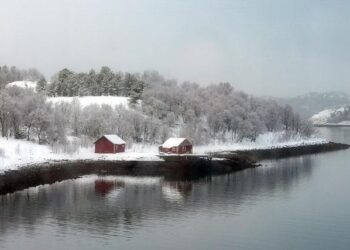Industry executives are increasingly optimistic about accelerating Norway’s offshore field developments, signaling a potential shift in the pace of project execution within the sector. Speaking to Upstream Online, key figures highlighted technological advancements, streamlined regulatory processes, and enhanced collaboration as critical factors driving this momentum. With global energy demand continuing to evolve, stakeholders are emphasizing that faster development timelines are not only feasible but necessary to secure Norway’s position as a leading energy supplier.
Industry Leaders Urge Streamlined Regulatory Processes to Accelerate Project Timelines
Top executives across Norway’s oil and gas sector emphasize the urgent need to overhaul regulatory frameworks that currently slow down critical field development projects. By simplifying approval processes and reducing bureaucratic layers, industry leaders argue that projects can move from concept to production much faster, unlocking significant economic value. The call highlights a consensus that streamlined regulations will not only enhance project efficiency but also bolster Norway’s competitiveness on the global energy stage.
Key proposals shared among the leadership include:
- Consolidating multiple permit applications into one unified submission to minimize delays.
- Implementing fixed review timelines with accountability measures to ensure timely decisions.
- Encouraging early collaboration between regulators and operators to anticipate compliance challenges.
| Proposal | Expected Impact | Target Timeline |
|---|---|---|
| Unified Permitting | Cut administrative time by 30% | 6-12 months |
| Fixed Review Deadlines | Improve predictability | Immediate |
| Regulator-Operator Workshops | Reduce rework by 25% | Ongoing |
Emphasizing Collaboration Between Operators and Authorities to Unlock Norway’s Offshore Potential
Industry leaders emphasize that accelerating developments in Norway’s offshore sector hinges on a seamless partnership between operators and regulatory bodies. By fostering transparent communication and aligning on shared objectives, both parties can navigate complex project timelines more efficiently. This collaborative approach not only mitigates bureaucratic hurdles but also leverages the expertise and insights from each stakeholder to ensure projects are delivered on schedule without compromising safety or environmental standards.
Key areas identified for enhanced cooperation include:
- Streamlined permitting processes to reduce waiting times and uncertainty;
- Joint innovation initiatives that deploy new technologies for cost-effective field developments;
- Coordinated workforce planning to optimize skill utilization across projects;
- Shared data platforms facilitating real-time monitoring and decision-making.
By embracing these strategies, Norway can unlock the full potential of its offshore resources, turning ambition into actionable progress and maintaining its position as a global energy leader.
| Collaboration Focus | Expected Benefit |
|---|---|
| Permitting Streamlining | Cut approval time by up to 30% |
| Innovation Partnerships | Reduce development costs by 15% |
| Workforce Coordination | Improve resource efficiency by 20% |
| Data Sharing | Enhance project transparency |
Innovative Technologies and Flexible Project Models Key to Faster Field Developments
Industry leaders emphasize that embracing cutting-edge technologies combined with adaptable project management frameworks is pivotal to accelerating development timelines in Norway’s oil fields. Advanced digital tools like AI-driven reservoir modeling, integrated data analytics, and automated drilling systems are enabling operators to reduce uncertainties and enhance decision-making efficiency. This technological shift not only compresses lead times but also reduces costs and environmental impact, positioning Norway as a frontrunner in sustainable resource extraction.
In parallel, flexible project models that allow dynamic resource allocation, modular field layouts, and phased execution are gaining traction. These models support rapid adjustments to changing market conditions and stakeholder demands, ensuring projects stay on track without compromising quality or safety. Industry experts highlight the importance of collaboration across the value chain, noting that synchronized workflows and transparent communication unlock greater agility, as demonstrated in several recent successful field developments:
- Modular Design: Speeds up installation with prefabricated components.
- Agile Contracting: Enables quicker procurement and contractor mobilization.
- Real-Time Monitoring: Facilitates proactive risk management and optimization.
| Technology/Model | Benefit | Impact on Timelines |
|---|---|---|
| AI Reservoir Modeling | Improved accuracy in reserves estimation | Reduced planning phase by 25% |
| Modular Field Layouts | Enhanced installation flexibility | Shortened construction by 30% |
| Agile Contracting | Faster supplier onboarding | Accelerated procurement by 20% |
Key Takeaways
As Norway navigates the complexities of accelerating its field developments, industry executives remain cautiously optimistic. While challenges persist-from regulatory hurdles to environmental considerations-the consensus is clear: with coordinated efforts and a renewed focus on efficiency, faster project delivery is achievable. The coming months will be critical in translating this determination into tangible progress, as stakeholders work to ensure Norway’s energy future remains both robust and resilient.
















